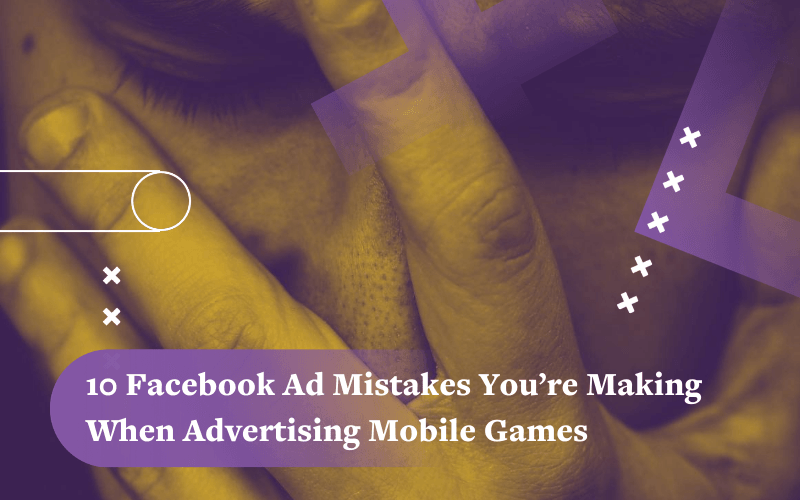Lifetime value (LTV) is an essential metric for all types of businesses, but especially for the mobile app and game industries. Learn what LTV means, how to track it, and how to increase it.
I’ve also included our custom LTV calculator that makes calculating lifetime value a breeze!
What Is LTV (Lifetime Value)?
LTV stands for lifetime value.
Lifetime Value (LTV) is the total amount of money a customer is expected to spend on your products or services during their entire relationship with your business. It’s a way to measure the long-term value each customer brings to your company.
LTV: Meaning in Marketing
In marketing, Lifetime Value (LTV) helps businesses make informed decisions about how much to invest in acquiring and retaining customers or users.
By knowing the LTV, marketers can customize their strategies to focus on high-value customers, optimize marketing spending, and improve customer relationships to maximize long-term profitability.
LTV Definition for Mobile Apps and Games
For mobile apps and games, Lifetime Value (LTV) is the total revenue a user is expected to generate throughout their entire engagement with the app or game. This includes all in-app purchases, subscriptions, and any other monetization methods.
Understanding LTV in this context helps developers and marketers determine how much they can spend on acquiring new users, optimize in-app features to enhance user engagement, and develop strategies to retain users for longer periods to maximize revenue.
What is the Difference Between CLV and LTV?
The difference between Customer Lifetime Value (CLV) and Lifetime Value (LTV) lies in their focus.
CLV specifically measures the total value derived from a single customer over their entire relationship with a business, emphasizing customer retention and loyalty.
In contrast, LTV is a broader metric that can apply to the value derived from users or products, not necessarily focusing on individual customer relationships.
Why Is Tracking Lifetime Value Important?
Here are some things you can use LTV for:
- To estimate the profitability of your product, service, or app
- Optimize revenue sources for maximum profit
- Determine how much can be spent on customer/user acquisition
- Observe the behavior of loyal customers or users
- Test the effects of content updates
Yes, you can learn all of this from a single metric. Despite that, many business owners still don’t give lifetime value proper attention.
Keep in mind that there are some traps to avoid when using LTV for user acquisition. Some of the most common ones include overly optimistic predictions, and not separating revenue sources.
Lifetime Value (LTV) Formula
The formula for calculating Lifetime Value (LTV) is:
LTV = Average Revenue Per User (ARPU) × Customer Lifetime
Where:
- Average Revenue Per User (ARPU) is the average amount of revenue generated per user over a specific period.
- Customer Lifetime is the average duration a customer remains active or engaged with the business.
This formula can vary depending on the business model and the specific metrics used, but the basic concept remains to multiply the average revenue per user by the duration of their engagement.
How to Calculate Lifetime Value (LTV)?
To calculate Lifetime Value (LTV), follow these steps:
- Determine Average Revenue Per User (ARPU):
- ARPU is calculated by dividing the total revenue by the number of users over a specific period.
- Formula: ARPU = Total Revenue / Number of Users
- Determine Customer Lifetime:
- Customer Lifetime is the average duration a user remains active with the business.
- This can be measured in months, years, or other relevant time periods depending on the business model.
- Calculate LTV:
- Multiply the ARPU by the Customer Lifetime to get the Lifetime Value.
Example
Suppose we have the following data for a mobile app over a year:
- Total revenue: $120,000
- Number of users: 3,000
- Average Customer Lifetime: 2 years
- Calculate ARPU:
- ARPU = 120,000 / 3,000 = 40 dollars per user per year
- Determine Customer Lifetime:
- Average Customer Lifetime is given as 2 years.
- Calculate LTV:
- LTV = 40×2 =80
So, using the ARPU metric and the given formula, the LTV is $80. This means that, on average, each user is expected to generate $80 in revenue over their entire relationship with the app.
Lifetime Value (LTV) Calculator
You can also use our LTV calculator to quickly calculate lifetime value.
How to Increase User Lifetime Value for Mobile Games?
Measuring LTV is fairly simple, but finding ways to increase it is a bit more challenging. Our main focus is to help you optimize your game for the best performance, so let’s get to some of the best practices that will surely improve the lifetime value of your game’s users. There are some things you can do about the game design and mechanics, as well as others that are related to proper tracking.
Let’s start with things you can do in-game.

1. Simplify the Onboarding Experience
When new users launch your game, they expect a simple starting experience. This is something that you should test while your game is still in the beta phase – try out different onboarding processes to see what works best for your game.
Keep the required steps before they can start playing to a minimum. For example, if you want the users to sign up or log in – make sure they can do it with just a click, by connecting to their social media accounts (Facebook, Google). Remember that what people want from a game is an instant experience.
2. Experiment With Game Difficulty
When you finally get the users to install and play your game, the next challenge is keeping them engaged. This is also something you should do while your game is in the beta phase.
The secret to keeping the players engaged is making the game both challenging and entertaining. The key is finding the right fun-challenge ratio.
That can be done by experimenting with different cohort groups. For example, you can create different versions of the game: a version more difficult than the primary one, and an easier version. Separate these versions and observe how different cohorts react to them.
Testing in-game features can help you discover the golden setting for your game. For example, you might discover at which levels are the users engaged and more likely to spend and why is that so.
3. Create Periodical In-Game Events
If this is possible for your game type, enrich your game with different in-game events. You can base them on seasons, holidays, or whatever you think your audience might like. These kinds of features are proven to have a positive impact on revenue and retention. Consequently, they will do the same for a game’s user LTVs.
For example, a sports mobile game can focus on major sports tournaments. Almost every game genre can do something different around Christmas time – organize special competitions, introduce new skins, or hand out special rewards.
Of course, this is not something you want to do last minute. You can create a yearly timeline of events that will take place in your game.
These are some of the things you can do to improve user LTV inside the game itself. Now let’s get to what you can do in terms of tracking and marketing.

4. Segment Your Players
One of the most important steps for improving your user LTV is segmenting your players.
By doing so, you will notice how different groups behave differently and how you can use this information to meet their needs.
You can segment the users by:
- Spending habits (high vs. low spenders)
- Behavior over time (e.g. after an update)
- Psychographic variables
- Location
- Age and gender
- In-game actions
5. Craft Personalized and Targeted Offers
Once you’ve segmented your players, you can start creating different offers for different players.
Your players all have different playing styles, engagement, and spending habits.
Every user segment is more or less willing to spend money on your in-app purchase offers. Besides that, some of them respond better to IAPs, while others prefer ads.
The rules for creating special offers are simple.
They should appear at the right moment in the players’ journeys and bring good value for money.
When it comes to special offers and LTVs, one offer makes the biggest difference – the players’ first purchase.
This is usually some kind of “starter bundle” or “starter pack”. You need to tweak and adapt this offer to fit all of your user segments.
Once you get your users to make their first purchase, this should decrease churn rates and boost player LTVs.
6. Re-Engage Players
The most common way of re-engaging users is by using push notifications. When sending out push notifications, don’t forget to segment the users by their behavioral data to ensure maximum personalization. Equally important, they have to include valuable content.
For example, you can provide the players with:
- Time-limited offers
- Special deals for loyal customers
- Important game updates
When using push notifications, be careful. You want to attract the users that already installed the game, but not annoy them to the point where they decide to uninstall it. Keep in mind that there is a fine line between the two. A good practice to determine push notification frequency is to track user activity. For example, if they launch the game once a day, send one notification, if they launch it three times, send three, etc.
7. Include Rewarded Video Ads
Wondering how in-app advertising affects customer lifetime value? According to Ironsource, rewarded video ads can significantly increase user LTV.
This comes as no surprise since they are known to boost engagement, ARPDAU, and user retention rates, all of which affect lifetime value. To make things even better, rewarded video ads cost 86% less than interstitial video ads (Mobile Marketer).
It is common that some users don’t feel ready to pay when they start playing a game.
For this reason, it’s a great idea to introduce rewarded video ads relatively early. Especially if your game falls into the casual category. According to Appodeal, if users engage with rewarded video ads during their FTUE, they are more likely to spend money afterward. More precisely, five times more likely!
It’s important to give players a reward valuable enough to motivate them to watch the ad. Depending on the game type, you can offer them free coins, extra lives, or the unlocking of special features in return for watching an ad.
Giving them a peek into the content they would usually have to pay for might encourage their future purchases. In the long run, it can also boost their loyalty.

8. Encourage Social Sharing
You can encourage your players to share their gaming experiences on social media. For example, after accomplishing something big in the game, integrate a share button. Features like this contribute to the virality factor of your game’s lifetime value.
What you can do outside the game is to create an engaged gaming community for your game across social media channels. The ultimate goal of your game’s social media marketing should be to encourage gamers to share their experiences, challenges, and goals.
9. Attribute Non-Paying Users
There are players that won’t make any in-game purchases or even click on in-game ads, but will still drive game engagement. A common example of this are players in MOBA (massive online battle arena) games.
How so?
Sometimes, users who play frequently and have long play sessions can be equally important as paying users. If you have a MOBA or a similar game, you should keep this in mind and attribute this properly when calculating LTV.
10. Optimize for Long-term Engagement and Retention
Engagement and retention are metrics that go hand in hand with lifetime value. If you can’t retain players for long enough and keep them engaged, the lifetime value of your players will suffer. On the other hand, if you crack the code of long-term engagement, you’ll certainly see a boost in lifetime value.
The key is to optimize both your game and your user acquisition strategy for long-term engagement.
In terms of your game, you need to make it as addicting as possible and add features that will keep players coming back for more.
For example, a trend for casual games is adding meta-layers to the core gameplay. These additional progress loops give games more depth and players have long-term goals. It’s easy to see how that positively impacts long-term engagement and retention.
Not only that, but meta-layers create more opportunities to monetize players, increase ARPDAU, and subsequently, lifetime value.
UA Campaigns
Your user acquisition campaign should also be optimized to maximize long-term engagement. For example, you can optimize your ad campaigns to target users who are more likely to stick around after a certain time period (e.g., a week, or a month) or those who are more likely to make an in-app purchase.
Naturally, those players will be more expensive to acquire, but it pays off in the long run.
Lifetime Value Benchmarks for Mobile Games
As we mentioned before, a player’s lifetime value depends on different factors, including the nature of the game. Different genres come with a different understanding of good lifetime values.
For example, just think about hyper-casual games.
These kinds of games can monetize really quickly after launch, however, they mostly come with a short lifespan,i.e., they lose players shortly after. For this reason, you will be able to calculate LTV with less historical data. According to Department of Play, hyper-casual game lifespans vary from 1 to 5 weeks.
On the other hand, the lifespan in mid-core games is significantly longer, often even surpassing 12 months’ time. This means you won’t be able to calculate LTV properly without months of data.
Here’s a genre breakdown of LTV range values (Department of Play):
- Hyper-casual games: $0.20 to $0.40
- Casual games: $1 to $3
- Mid-core games: $2 to $5
When it comes to lifetime values, they vary not only between genres but also between markets and even devices, according to a report by Appmagic.

In this overview of lifetime values in the Western market, you can see some genres come with significantly higher LTV than others: Role-playing games and Strategy games. On the bottom half, Word games and Hyper-casual games naturally have the lowest LTV.

If you take a look at the Asian market numbers, you may notice that more game genres have high average lifetime values. Here, the best performers also include RPG games, Strategy Games, but also Dance/Rhythm games.
Putting It All Together
We hope we’ve given you enough reasons to track lifetime value, especially if you’re in the mobile app or gaming industries.
To put things in perspective, LTV helps you better understand your players, and consequently how you can use those insights to maximize your game’s profits.







Comments